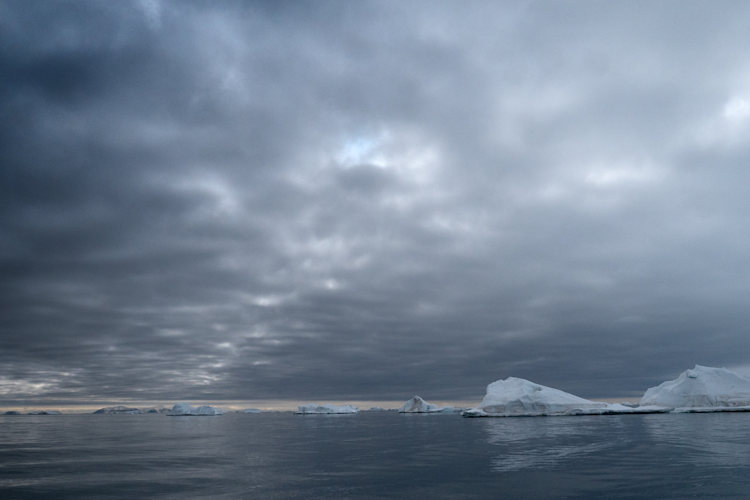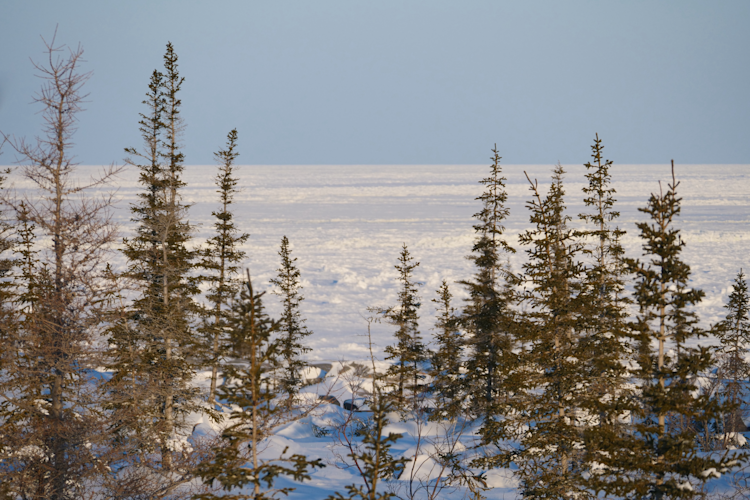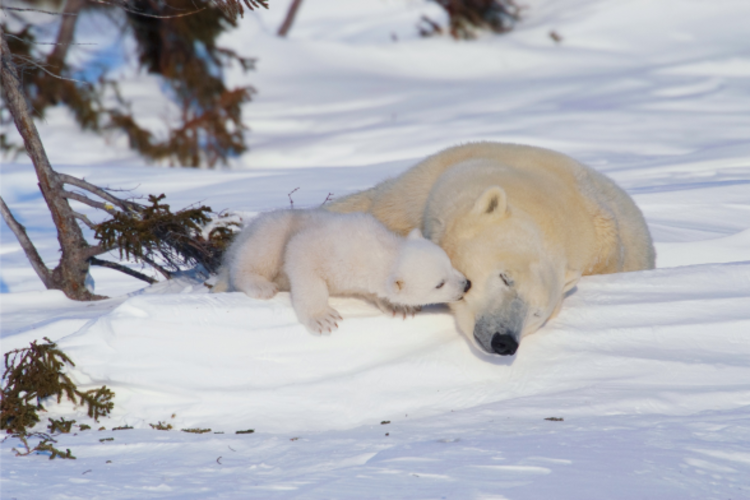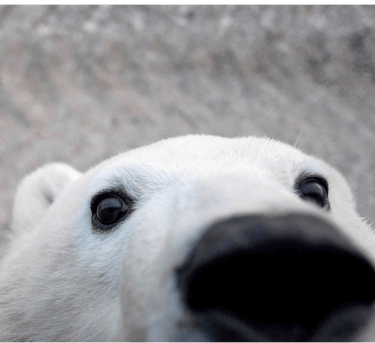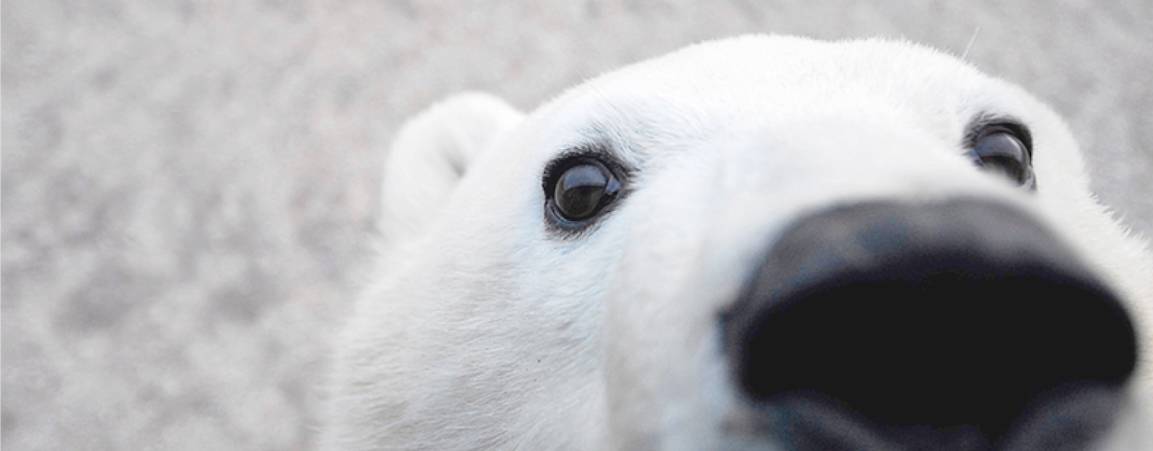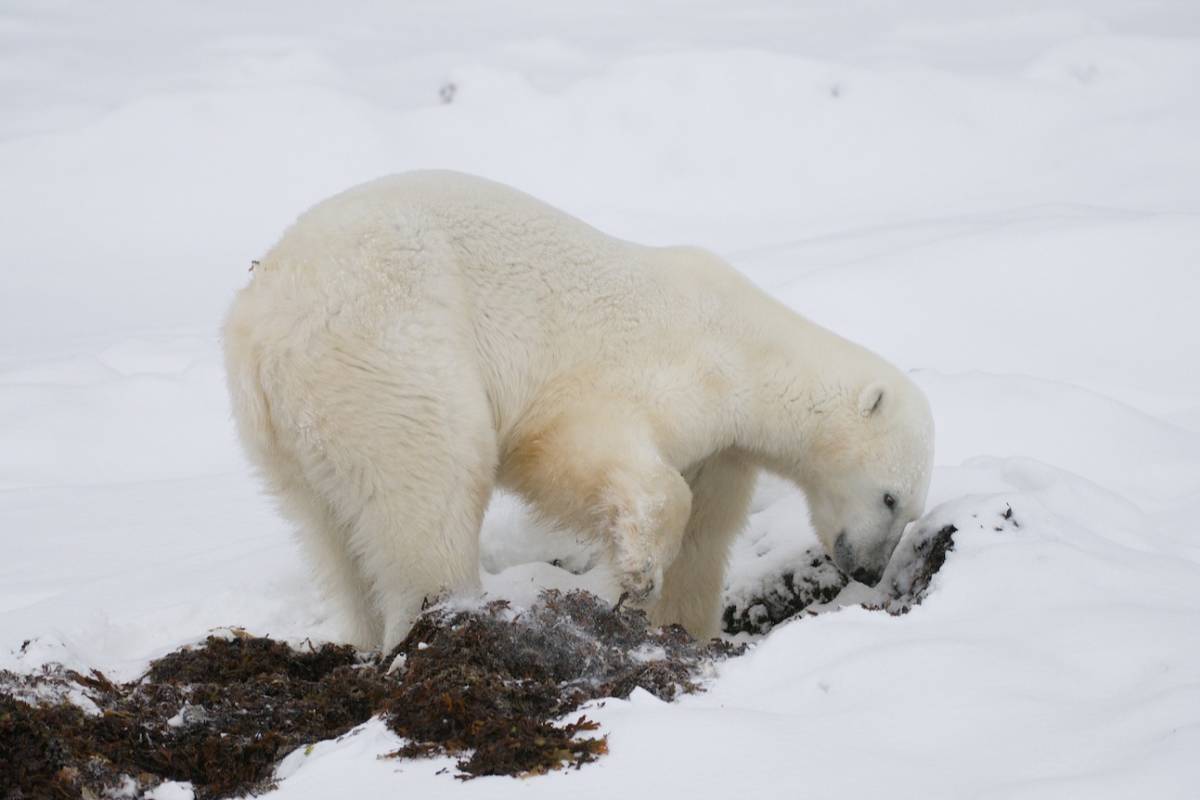
Photo: BJ Kirschhoffer / Polar Bears International
Polar Bears & Land-Based Foods
MINS
14 Jun 2025
Studies have shown that the calories bears consume on shore do not replace the calories they get from their fat-rich seal diet.
A fat bear is a healthy bear. Polar bears depend on an enormous amount of fat from the seals they catch on the sea ice to survive and reproduce in their challenging Arctic habitat.
Polar bears do find some food on land, like kelp, berries, eggs, and even reindeer. But studies indicate that they simply can’t get enough calories from terrestrial food to replace their seal-based diet and support entire polar bear populations.
Polar bears lose weight while on land, even when feeding
Unlike grizzly and brown bears, polar bears don’t hibernate when food is scarce. Polar bears in some regions, like Canada’s Hudson Bay, spend several months each year on land when sea ice melts. While on land, they have little access to food—and this period is getting longer.
While bears can find some food on land in the summer, like berries, vegetation, and carcasses, most bears still lose weight—about one kilogram (two pounds) per day. Strikingly, polar bears that we know are completely fasting (e.g., while in temporary captivity after being removed from a human conflict situation) lose weight at the same rate. It turns out that when polar bears are forced to forage on shore in the summer, the calories they manage to find are canceled out by the calories expended while finding the food in the first place. In other words, the foods available on land don’t greatly offset the risk of starvation.
Predation by polar bears on land-based species
Bird Eggs
Polar bears in several populations around the Arctic, including Western Hudson Bay, have been spotted eating bird eggs in the summer. While some individual bears can benefit, eggs aren’t a solution for the polar bear population as a whole—there just aren’t enough to go around.
In the short term, eggs might partially offset summer weight loss for the bears lucky enough to find them, but it’s not an answer for the survival of the population.
Svalbard Reindeer
Since 1992, two studies have reported a total of about 27 observations of polar bears hunting or scavenging on reindeer on the Norwegian archipelago of Svalbard. Reindeer pose nutritional challenges for polar bears:
Lower in calories: Although potentially a valuable prey item, reindeer provide half or less of the energy found in seals (calories per kg) because they have much less body fat than seals.
Fast, high-endurance prey: Polar bears are also not well-equipped to hunt reindeer, which are fast animals with good stamina.
Hard to digest: Polar bears are uniquely adapted for absorbing a high-fat diet, meaning it's more difficult to extract nutrition from reindeer. In fact, when given a high-protein diet in captivity, polar bears can develop kidney disease or liver cancer. This is probably because these organs must do extra work to process protein rather than fat.
More research is needed to understand the role of reindeer in Svalbard polar bear diets, including how common it is for predation to occur, whether this rate is changing over time, and if polar bears could have any impact on Svalbard reindeer populations.
Sea ice loss is the main threat to polar bears
Polar bears need dependable sea ice habitat and access to fatty seals to thrive. Their close connection to sea ice can even be seen in the fossil record—the distribution of polar bear fossils lines up with historical expansion and retreat of sea ice. In places where sea ice disappeared in the past, like Denmark and Iceland, polar bears did too.
Ultimately, the calories that polar bears can gain from land-based food won’t be enough to preserve their current distribution and numbers.
“The fatter the bear, the better its chances of surviving the summer and being healthy and ready to hunt again (and for some females, to give birth to their cubs) once the sea ice returns in the late fall. Without sea ice, there will be no polar bears. Neither the bears nor their seal prey can tolerate the continued loss of their primary habitat.”
Article contributors: Dr. Thea Bechshøft, Dr. John Whiteman
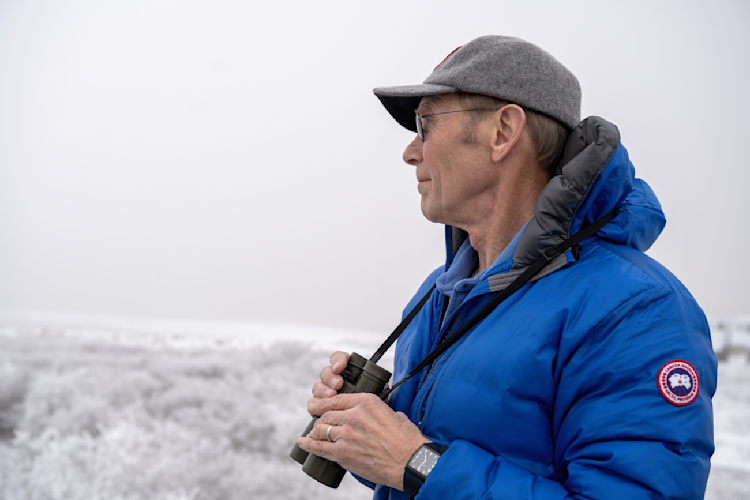
Photo: Jenny Wong
Meet Our Scientists
With researchers based in the U.S., Canada, Denmark, and Norway, our impact spans the circumpolar Arctic.



